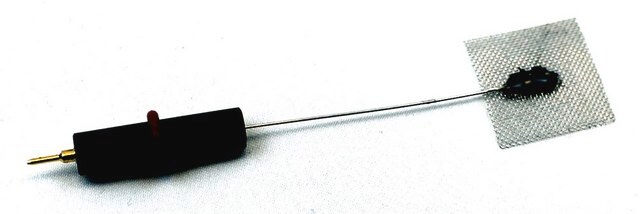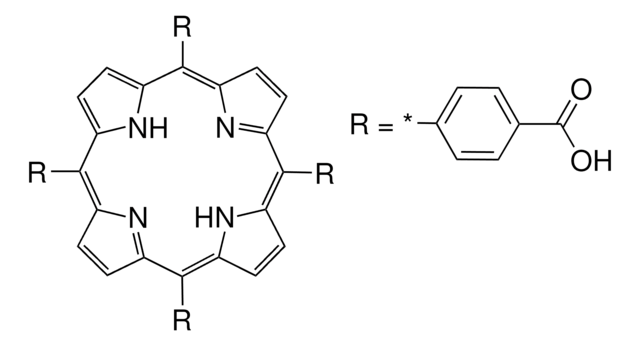298093
Platin
gauze, 100 mesh, 99.9% trace metals basis
About This Item
Empfohlene Produkte
Qualitätsniveau
Assay
99.9% trace metals basis
Form
gauze
Widerstandsfähigkeit
10.6 μΩ-cm, 20°C
Partikelgröße
100 mesh
bp
3827 °C (lit.)
mp (Schmelzpunkt)
1772 °C (lit.)
Dichte
21.45 g/cm3 (lit.)
SMILES String
[Pt]
InChI
1S/Pt
InChIKey
BASFCYQUMIYNBI-UHFFFAOYSA-N
Verwandte Kategorien
Allgemeine Beschreibung
Anwendung
- as a microelectrode-indicator electrode in voltammetry
- to study chronopotentiometry of hydrogen peroxide with a platinum wire electrode or
- in gas detection instruments.
- as electrode in spectrochemical cell to measure the electrochemical properties of aqueous solutions of epinephrine, dopamine, and norepinephrine.
Menge
Lagerklassenschlüssel
13 - Non Combustible Solids
WGK
nwg
Flammpunkt (°F)
Not applicable
Flammpunkt (°C)
Not applicable
Hier finden Sie alle aktuellen Versionen:
Besitzen Sie dieses Produkt bereits?
In der Dokumentenbibliothek finden Sie die Dokumentation zu den Produkten, die Sie kürzlich erworben haben.
Kunden haben sich ebenfalls angesehen
Artikel
Noble-metal nanostructures are widely used in a variety of applications ranging from catalysis to electronics, surface plasmon resonance (SPR), surface-enhanced Raman scattering (SERS), and biomedical research.
Unser Team von Wissenschaftlern verfügt über Erfahrung in allen Forschungsbereichen einschließlich Life Science, Materialwissenschaften, chemischer Synthese, Chromatographie, Analytik und vielen mehr..
Setzen Sie sich mit dem technischen Dienst in Verbindung.



